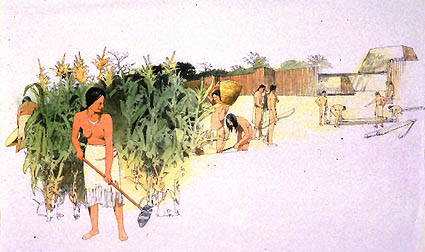
| The Mississippian economy of the American Bottom was built on previous Woodland adaptations (HDYK-ECON). Because of the abundance of different aquatic, wetland, prairie, and forest habitats, Native Americans in the American Bottom enjoyed a wealth of natural resources. A variety of plant and animal foods were available throughout the year. |